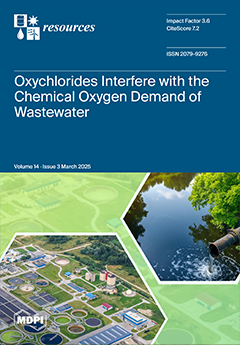Hydrothermal carbonization (HTC) is an environmentally friendly process for transforming biomass into sustainable hydrochar, which is a carbon-rich material with a variety of potential applications. Herein,
Tectona grandis seeds (TGs) were transformed into hydrochars using HTC at low temperatures (180–250 °C) and autogenous
[...] Read more.
Hydrothermal carbonization (HTC) is an environmentally friendly process for transforming biomass into sustainable hydrochar, which is a carbon-rich material with a variety of potential applications. Herein,
Tectona grandis seeds (TGs) were transformed into hydrochars using HTC at low temperatures (180–250 °C) and autogenous pressure. The prepared hydrochars were rich in oxygenated functional groups. The optimized hydrochar, HC-230-4 (prepared at 230 °C, for 4 h), presented a ratio of H/C = 0.95 and O/C = 0.29, an improved degree of coalification, and a high heating value (26.53 MJ kg
−1), which can replace bituminous coals in the power sector. The prepared hydrochar was further activated in the presence of CO
2 to prepare activated carbon (AC). XRD, TGA, FTIR, FE-SEM, and BET techniques were used to characterize raw biomass (TGs), hydrochar, and ACs, to identify the potential applications for the developed materials. BET studies revealed that the hydrochar has limited porosity, with a low surface area (14.41 m
2g
−1) and porous volume. On the other hand, the derived AC (AC-850-5) has a high surface area (729.70 m
2g
−1) and appreciable total and microporous volumes (0.392 cm
3g
−1 and 0.286 cm
3g
−1). The use of biomass, mainly waste biomass, for the production of carbon-rich materials is an effective strategy for managing and valorizing waste biomass resources, reducing environmental pollution, and improving sustainability, being in line with the principles of circularity.
Full article





